Can You Leave Archery Targets Outside: Do They Get Wet?
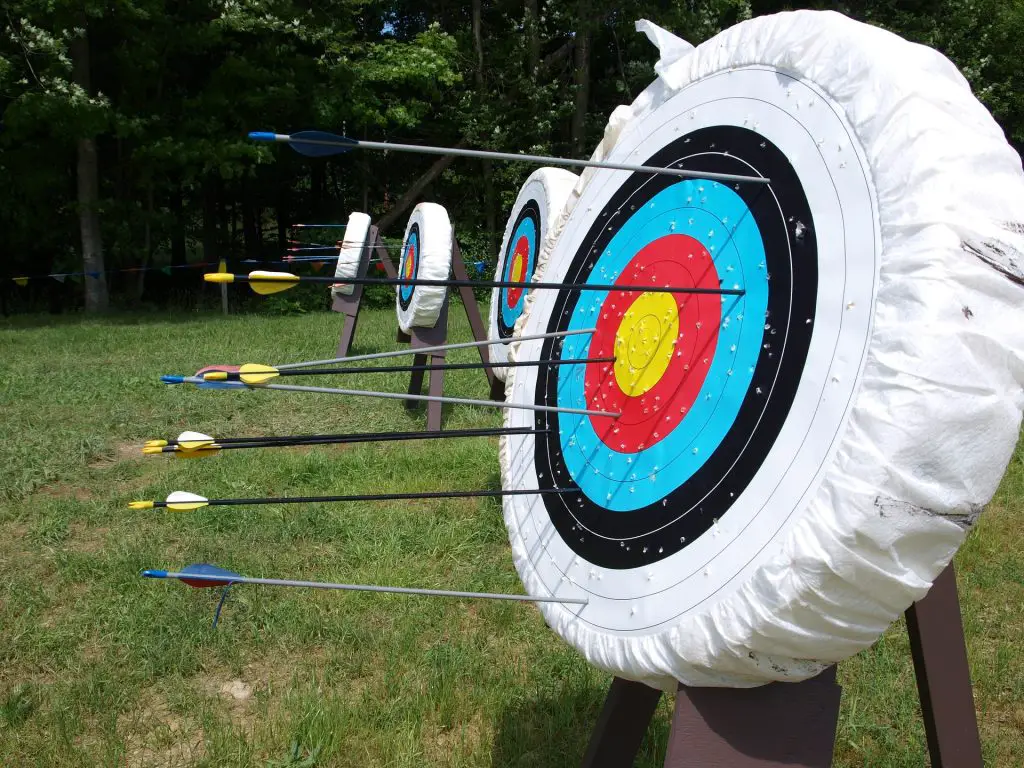
Archery targets are an essential part of archery practice for both beginners and experienced archers.
They provide a way to hone your skills and aim accurately, helping you become a better archer.
While archery targets are generally designed to be used in outdoor environments, archers often wonder whether it is safe to leave their targets outside permanently.
In this article, we will discuss whether you can leave archery targets outside, and if so, for how long.
We will also examine the various factors that can affect the durability of archery targets and the best practices for storing them outside.
Before we delve into the specifics, let’s define what archery targets are and why they are crucial in archery practice.
Quick Answer: Yes, you can leave archery targets outside. Most archery targets, including 3D, foam, and bag-type targets, can be left outside in the open. While hay bales shouldn’t be left outside, other targets may be suitable for outdoor use. Ultimately, it depends on the specific material of the target.
Archery Targets-Overview
Archery targets are objects used as a target for arrows during archery practice or competitions.
These targets can come in various shapes and sizes and are made from different materials, including foam, bag, 3D, and self-healing materials.
Archery targets are critical in archery practice because they help you perfect your aim and develop your archery skills.
Practising on a target helps you understand your bow and arrow, how they function together, and how to aim precisely.
Given their importance in archery practice, it’s crucial to ensure that archery targets remain in good condition to provide optimal performance.
In the following sections, we will explore the different factors that can impact the durability of archery targets when left outside and the best practices for storing them.
Environmental Factors That Can Affect Archery Targets
Several environmental factors can impact the durability of archery targets when left outside.
These factors include sun exposure, moisture and humidity, wind exposure, and temperature extremes.
1. Sun exposure is one of the most significant environmental factors that can affect the durability of archery targets.
When targets are left outside for extended periods, the sun’s rays can cause the target to fade, crack, or even disintegrate. It is best to avoid placing targets in direct sunlight for long periods or invest in a target cover to protect them.
2. Moisture and humidity can also significantly impact the durability of archery targets.
Targets made of foam and other materials that can absorb water are particularly susceptible to moisture damage.
When targets are exposed to moisture, they can rot, mold, or develop mildew, rendering them unusable. It is crucial to store targets in a dry and covered area to avoid moisture damage.
So, Can Archery Targets Get Wet?
Yes, they can get wet. Also, whether archery targets can get wet depends largely on the target’s material and construction. While most commercial targets can withstand rain, it is still advisable to use a bow case to cover them when left outside.
3. Wind exposure can also damage archery targets, particularly lightweight targets.
Strong winds can blow targets over or cause them to move around, leading to rips or tears. It is best to anchor targets or invest in target stands to keep them secure during windy conditions.
4. Temperature extremes can also impact the durability of archery targets.
Extremely high or low temperatures can cause targets to crack or shrink, especially if they are made of foam or plastic.
It is best to store targets in a moderate-temperature environment to avoid damage caused by temperature extremes.
It is important to consider these factors when storing targets and to take the necessary precautions to protect them.
In the next section, we will discuss the different types of archery targets and their durability when left outside.
Types of Archery Targets
There are several types of archery targets available in the market, each with its own unique features and durability when left outside. Some common types of archery targets include:
Foam Targets
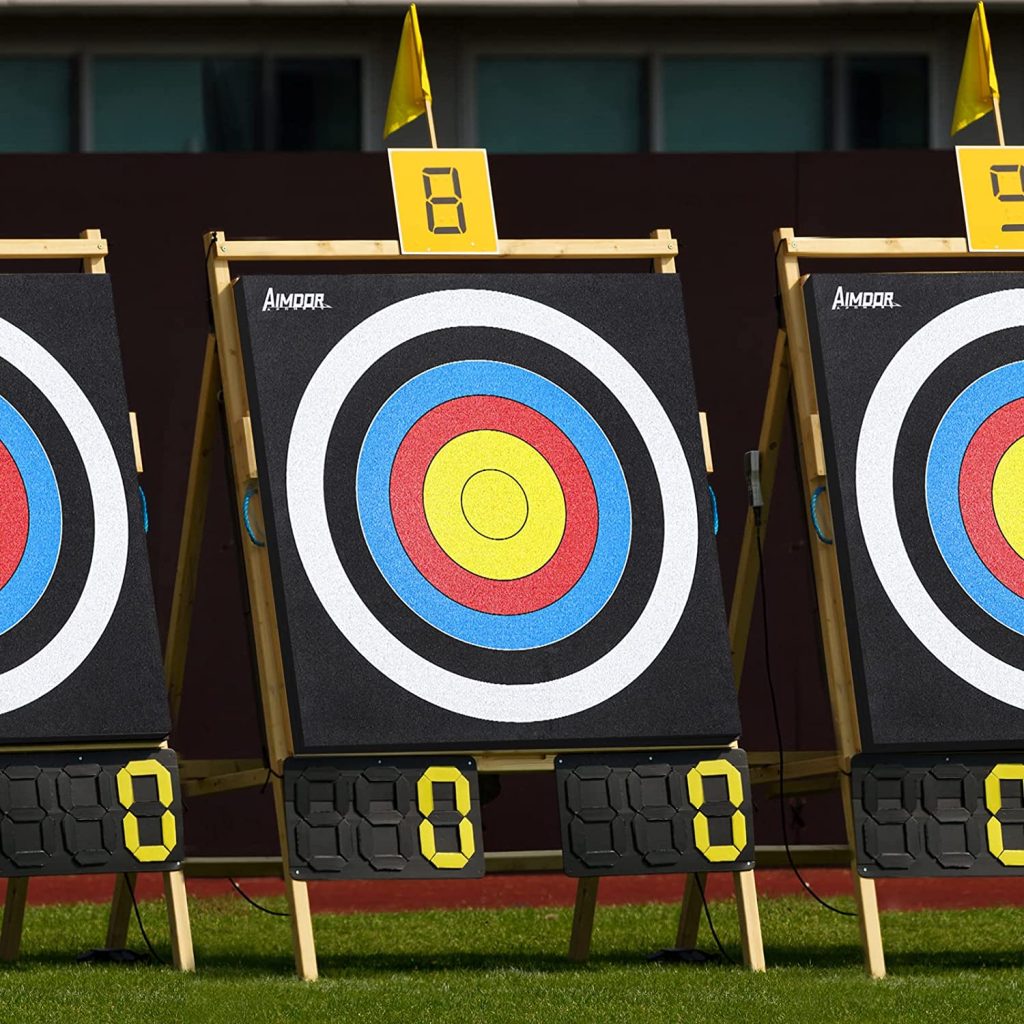
Foam targets are a popular choice for archers because of their durability and versatility. They are made of compressed foam, which makes them lightweight and easy to move.
The foam used in these targets is usually of high density, ensuring that the arrows penetrate the foam to the desired depth without damaging them.
In terms of durability, foam targets can withstand moderate sun exposure and temperature changes, but they are susceptible to moisture damage.
When exposed to moisture, the foam can become soft and lose its shape, making it difficult to use as a target.
Foam targets should be stored in a dry place when not in use, and it is recommended to cover them with a waterproof cover to protect them from rain and snow.
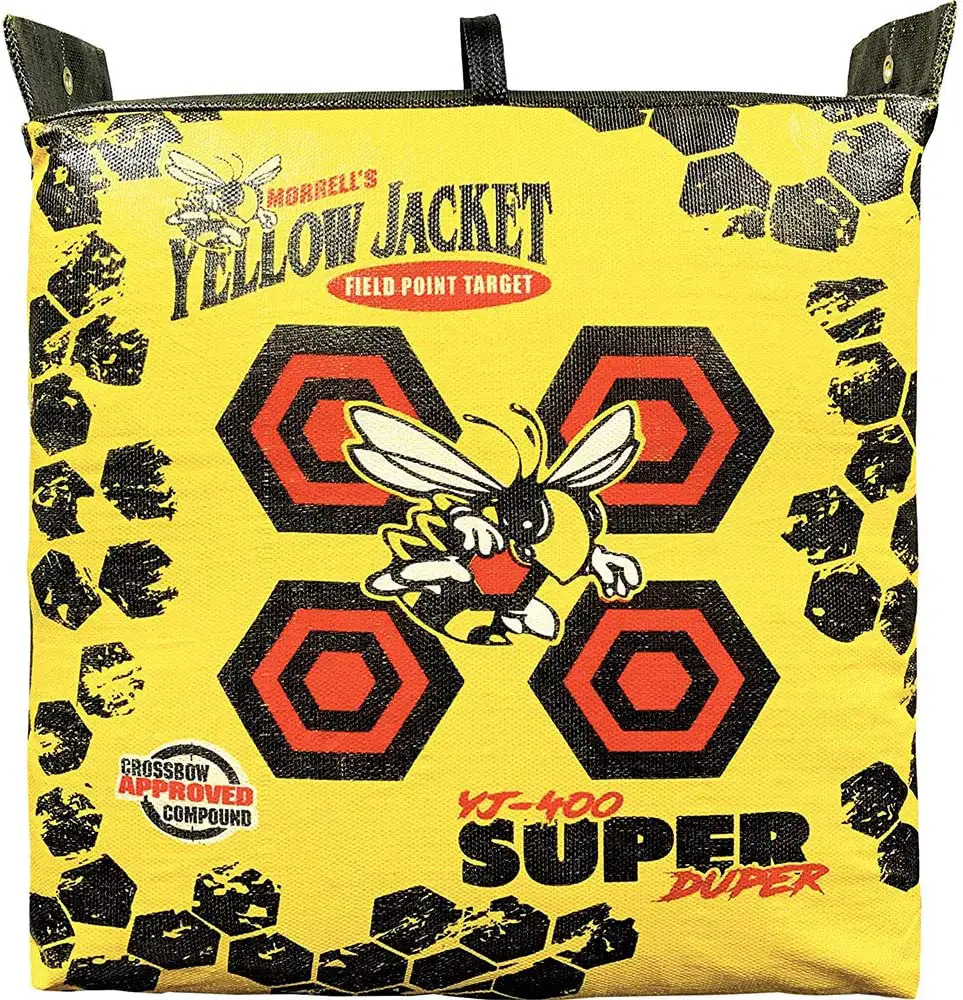
Bag Targets
Bag targets are another popular type of archery target.
They are made of durable synthetic material, such as nylon or polyester, and filled with synthetic fibers or other materials to create a dense target surface.
The tightly woven material of the bag allows for easy arrow removal and reduces the likelihood of arrow damage.
Bag targets are known for their durability and can withstand a range of environmental conditions, including exposure to the sun, wind, and rain.
Most bag targets are designed with a waterproof cover that helps to protect the target from moisture damage.
However, prolonged exposure to rain and snow can still cause damage to the synthetic material of the bag, leading to a decrease in target density and effectiveness.
To extend the life of a bag target, it is important to store it in a dry place when not in use and cover it with a waterproof cover if it will be exposed to the elements for an extended period.
Bag targets can also be easily transported, making them a great option for archers who need to set up a target quickly and easily in different locations.
3D targets

3D targets are lifelike replicas of animals that archers use to simulate hunting scenarios. They are made of a variety of materials, including foam, rubber, or a combination of both.
3D targets are popular because they allow archers to practice their aim and technique on a realistic target.
In terms of durability, 3D targets can withstand a range of environmental conditions, but they are more susceptible to damage than other types of targets.
The foam or rubber material can become soft or brittle when exposed to extreme temperatures, such as prolonged exposure to direct sunlight or freezing temperatures.
In addition, repeated arrow strikes can cause the foam or rubber to break down over time, especially if the archer is using broadheads or high-powered crossbows.
To extend the life of a 3D target, it is important to store it in a dry place when not in use and cover it with a waterproof cover to protect it from rain and snow.
It is also important to use the correct type of arrows and bow for the target to avoid damaging it. Archers should inspect the target regularly for signs of wear and tear and replace it as needed.
Block targets
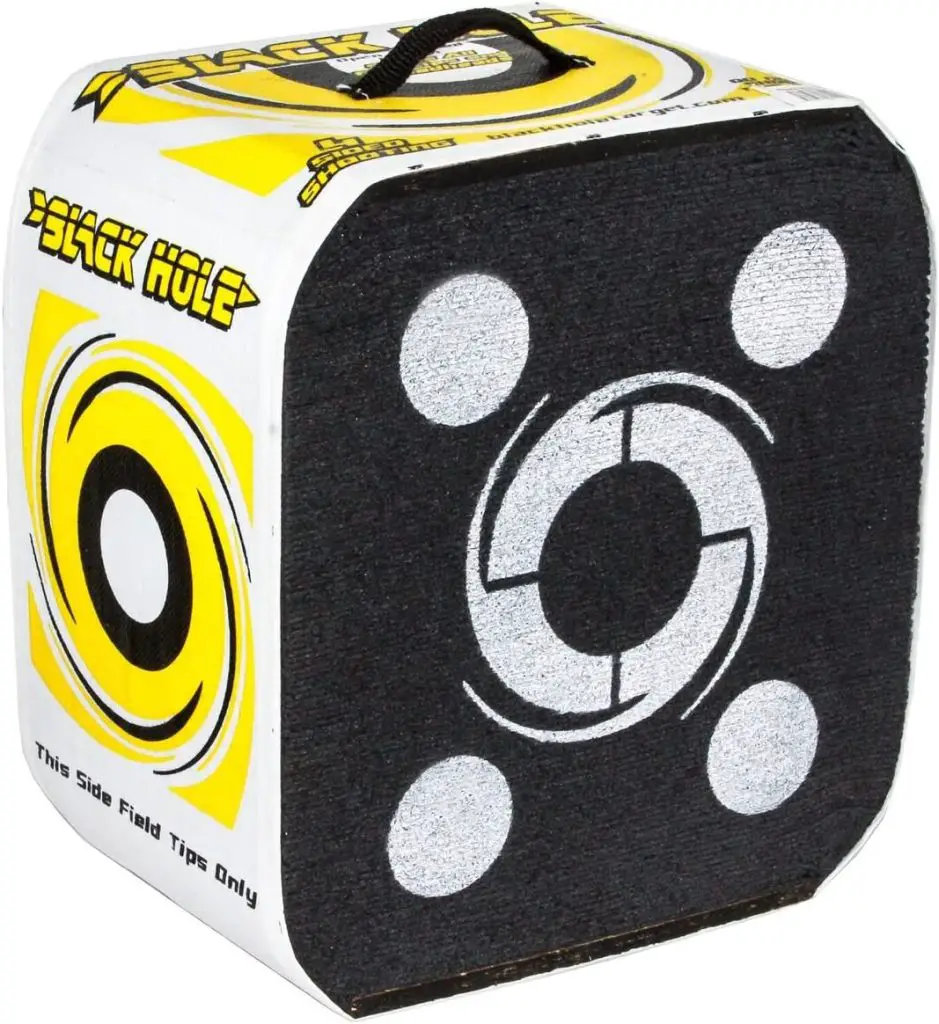
Block targets are made of layered foam or compressed synthetic fibers that provide a dense, durable target face for archers to shoot at.
The layered design of block targets allows the arrows to penetrate into the target, rather than just hitting a solid surface and bouncing off.
In terms of durability, block targets are known for their long lifespan and ability to withstand exposure to outside elements.
The foam or synthetic fibers used in the construction of the target are typically weather-resistant and can withstand exposure to rain, snow, and sunlight without breaking down or losing their density.
However, block targets are still susceptible to wear and tear from repeated arrow strikes.
Over time, the target face can become pitted and uneven, making it more difficult to remove arrows from the target.
This can also cause the target to become less effective at stopping arrows, especially if the archer is using broadheads or high-powered crossbows.
To extend the life of a block target, it is important to store it in a dry place when not in use and cover it with a waterproof cover to protect it from rain and snow.
Archers should also rotate the target regularly to ensure even wear and tear across the target face. It is also important to use the correct type of arrows and bow for the target to avoid damaging it.
Straw Targets
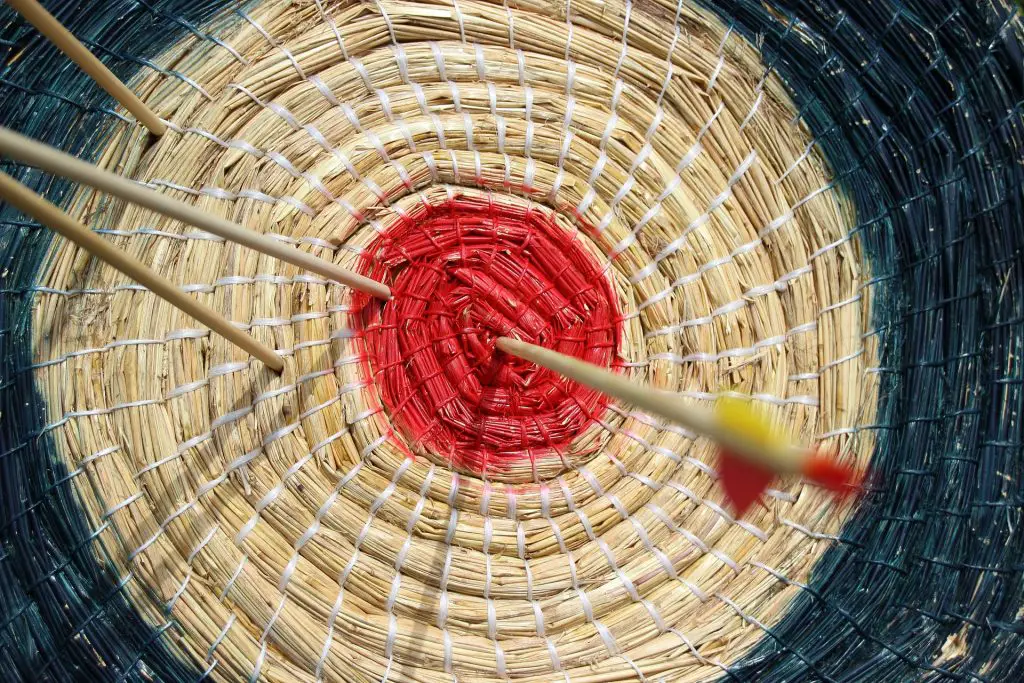
Straw targets are a traditional type of archery target made of tightly packed straw bales. They are often used for practice shooting with traditional bows and arrows.
In terms of durability, straw targets can be relatively long-lasting if they are kept dry and protected from moisture.
However, they are not designed for exposure to outside elements and can break down quickly if they get wet.
Rain, snow, and humidity can cause the straw to rot and lose its density, which can reduce the effectiveness of the target and make it more difficult to remove arrows.
Straw targets are also susceptible to damage from repeated arrow strikes.
Over time, the straw can become compacted and uneven, which can make it harder to hit and remove arrows from the target’s face.
This can also cause the target to lose its stopping power, especially when using broadheads or high-powered bows.
To extend the life of a straw target, it is important to store it in a dry place when not in use and cover it with a waterproof cover to protect it from rain and snow.
Archers should also rotate the target regularly to ensure even wear and tear across the target’s face. It is also important to use the correct type of arrows and bow for the target to avoid damaging it.
Comparison
Comparison of the durability of each type of archery target when left outside
When it comes to leaving archery targets outside, different types of targets have varying degrees of durability.
Here is a comparison of the durability of each type of archery target when left outside:
- Foam Targets: Foam targets are generally considered to be the most durable when left outside. They are designed to withstand exposure to the elements, including rain, snow, and sunlight. However, it is important to note that foam targets can break down over time if they are exposed to extreme temperatures or direct sunlight for prolonged periods.
- Bag Targets: Bag targets are also designed to be durable when left outside. They are made from materials that can withstand exposure to moisture and sunlight. However, like foam targets, bag targets can break down over time if they are exposed to extreme temperatures or direct sunlight for prolonged periods.
- 3D Targets: 3D targets are typically made from foam or plastic and are designed to mimic the shape and size of various game animals. While they can be used outside, they are not as durable as foam or bag targets. 3D targets are more susceptible to damage from repeated arrow strikes and exposure to moisture and sunlight.
- Block Targets: Block targets are made from compressed foam or rubber and are designed to be durable when left outside. They are resistant to moisture and sunlight and can withstand repeated arrow strikes without breaking down. However, like all targets, they will eventually wear out and need to be replaced.
- Straw Targets: As discussed earlier, straw targets are not designed to be left outside for prolonged periods. They are susceptible to damage from exposure to moisture and sunlight, and they can break down quickly if they get wet. Straw targets are best used for indoor or covered shooting ranges, where they can be protected from the elements.
When choosing an archery target to leave outside, it is important to consider the target’s durability and exposure to the elements.
Foam and bag targets are generally the most durable options, while 3D targets and straw targets are more susceptible to damage from exposure to moisture and sunlight.
Block targets offer a good balance of durability and affordability, but like all targets, they will eventually need to be replaced.
Proper maintenance and protection from the elements can help extend the life of any archery target.
Best Practices for Storing Archery Targets Outside
Storing archery targets outside requires careful consideration to ensure the targets remain in good condition for as long as possible.
Here are some best practices for storing archery targets outside:
Cover the targets:
To protect your targets from rain, snow, and harsh sunlight, consider covering them with a tarp or other protective cover. Make sure the cover is securely fastened so it doesn’t blow away in the wind.
Keep targets off the ground:
Whenever possible, keep targets off the ground to prevent moisture from seeping in and damaging the target. Use a sturdy stand or other types of support to keep the target elevated.
Store targets in a dry location:
If possible, store your targets in a dry location, such as a shed or garage. This will help to prevent moisture from damaging the target.
Keep targets out of direct sunlight:
Prolonged exposure to direct sunlight can cause some types of targets, such as foam and bag targets, to break down more quickly. To prolong the life of your targets, store them in a shaded area.
Rotate targets regularly:
Even with the best storage practices, outdoor targets will eventually wear out. To get the most out of your targets, rotate them regularly, using different targets on different days. This will help to distribute the wear and tear more evenly, prolonging the life of each target.
By following these best practices, you can help to ensure that your archery targets remain in good condition for as long as possible, providing you with a reliable target for practice and training sessions.
Conclusion
In conclusion, leaving archery targets outside can be a convenient option for some archers, but it can also result in damage and reduced durability of the targets.
The type of target and the environmental factors play a significant role in determining the target’s durability when left outside.
While some targets, such as foam, bag, and 3D targets, can withstand exposure to outdoor elements, others such as straw targets are not suitable for outdoor storage.
To ensure the longevity of archery targets when left outside, it is crucial to follow best practices such as covering the targets, storing them in a dry and shaded area, and ensuring they are secured in place to avoid any damage from wind or other environmental factors.
Following these practices can help prolong the life of the target and ensure that it remains in good condition for future use.
Ultimately, the decision to leave archery targets outside should be made with careful consideration of the type of target and environmental factors.
By understanding the strengths and limitations of each target type and following best practices for outdoor storage, archers can continue to enjoy their sport while maintaining the integrity of their equipment.
You might be interested in
